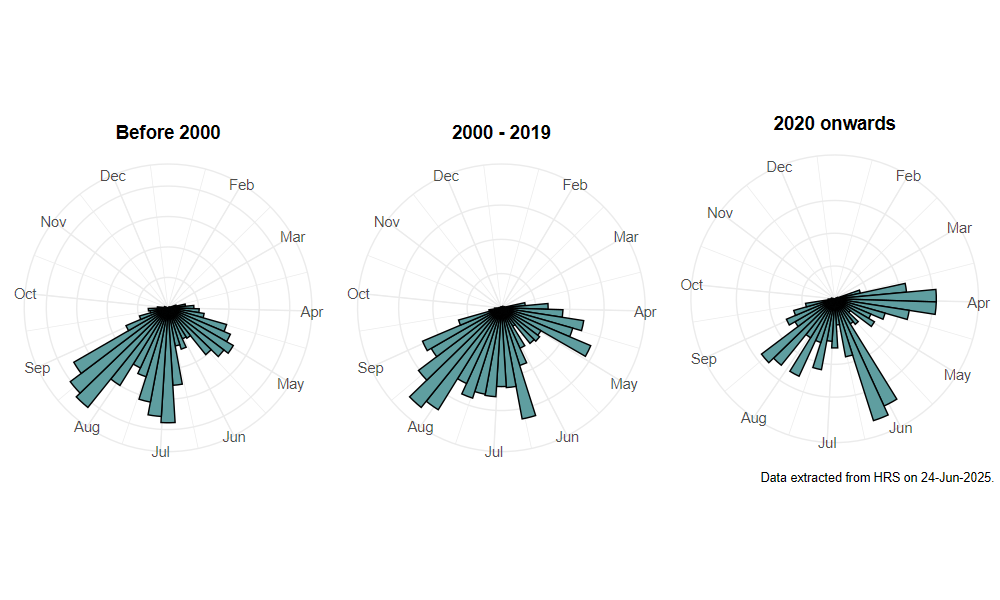Cheilosia vernalis (Fallén, 1817)
Identification
Identification difficulty = 3. ![]()
![]() according to Ball & Morris, 20241
according to Ball & Morris, 20241
Biology
The larva is thought to tunnel in the stems of Yarrow Achillea millefolium, mayweeds Matricaria sp., Goatsbeard Tragopogon pratensis and sow thistles Sonchus sp. Adults are usually found on low-growing Asteraceae or white umbels in open, flowery situations such as dry grassland, heathland margins, road verges and waste ground. Also in grassy clearings in woodland and in dunes.
Flight period
The following plots show the number of unique records per week excluding those reported to be of immature stages.

Distribution
Widespread and frequent in southern Britain. Less frequent in the north, with records extending to northern Scotland.

Trends
The following plots show the Frescalo TFactor vs year and a map of the rescaled frequency (all records) for the species.
-
Ball, S., & Morris, R. (2024). Hoverflies of Britain and Ireland. WILDGuides (3rd ed.). Oxford: Princeton University Press. ↩